PURPOSE The quiet eye (QE) is defined as the final fixation time that is a specific target prior to initiating movement. This study aimed to identify the cause of QE in golf putting and to present an efficient practice method for improving putting skills. METHODS Thirty participants were randomly assigned to one of three groups. Each group practiced golf putting in different ways for two days. RESULTS The QE group showed a significant difference in putting scores, which was higher than that of the control group. The visual-occlusion group showed no difference compared to the other groups in terms of putting scores. The QE group showed a significant difference in terms of QE in the retention and competition tests compared to the pretest. The control group tended to have a slightly longer QE in competition tests compared to the pretest. The visualocclusion group showed no statistically significant difference in QE based on the period. All three groups had significantly longer swing times over the selected period. There was no significant difference in terms of the alpha power of the occipital lobe based on group and period. CONCLUSIONS The position of the visual-occlusion group became stable. However, the QE did not lengthen. The QE group had a longer QE. Furthermore, the control group that practiced with their eyes open tended to have longer QE. Therefore, QE may be related to visual-based cognitive processing rather than posturalkinematics. Finally, this study proved that QE practice is a more efficient method for novices in golf putting.
PURPOSE This study aimed to verify the accuracy of three-dimensional (3D) motion data produced through artificial intelligence-based user motion recognition technology with images obtained using a smartphone monocular camera. This was done to explore the possibility of developing an application that can improve the reliability of the measurement of physical activity performing motions and feedback provision. METHODS To check the accuracy of the artificial intelligence-based 3D motion analysis system that utilized a semi-supervised learning method, a commercialized 3D infrared motion analysis system measured and compared motions on three movement planes, motions with limited joint movement, and fast motions in a wide moving range. RESULTS The motions on the coronal and sagittal planes produced through the 3D motion analysis application showed very high measurement accuracy; however, the accuracy of the measurement of motions on the horizontal plane, which could not be measured directly with a camera, was relatively lower than that of the coronal and sagittal planes. Accuracy in measuring 3D motion was moderate in moving motions and low in motions with limited joint movement. CONCLUSIONS For the developed 3D motion analysis system to be used in online physical education, the types of physical activities included in the program should be comprehensively composed through the analysis of the content system of the physical education curriculum and the resultant physical activities.
PURPOSE This study aims to help improve performance by comparing and analyzing the kinematic variables for each upper and lower extremities segment when two groups of players attack the national women’s fencing players in a match situation. METHODS This study divided the movement time, movement time ratio, Fente step length change, angle factor at each event, and velocity factor of the fencing point of a sword at each event into the Olympic medalists’ group (Group A) and the international competition winners group (Group B) during the fencing Marche Fente. An independent t-test was performed for each factor, and the results were compared. RESULTS As a result, the difference between the two groups in movement time was statistically significant in the front of the foot in the velocity factor. However, no statistical significance was found between the two groups in the front angle of the trunk, the elbow angle, and the knee angle. CONCLUSIONS This indicates that group A and group B are both outstanding players with the best performance, so they are similar in the details of the movements except for the very slight difference in time and velocity. Therefore, the average of the result values of the joint angle will be a feedback index for fencing beginners or education subjects who are now starting to fencing.
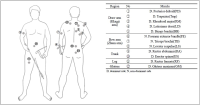
The past few decades has seen increasing kinematic studies using surface electoromyography (EMG) in archery, however there has been no such specific study in Korean traditional archery. The purpose of this study was to evaluate EMGs during archery shooting motion in Korean traditional archers. Ten men Korean traditional archers were participated, and divided into two groups according to the shooting stance; parallel stance group(PSG, n=5) and oblique stance group(OSG, n=5). The surface EMGs were measured 12 muscles during shooting motion of five events including Junbi(Set), Geogung(Set up), Manjak(Full draw), Balsi(Release), Machigi(Ending). At the result, muscle activity of posterior deltoid, trapezius, rhomboid major, latissimus dorsi, biceps brachii, forearm extensor bundle, triceps brachii, levator scapulae significantly increased at event of full draw and release, then significantly decreased again at event of ending, respectively(p<.01, p<.001). The muscle activity of erector spinae(ES) was also significantly increased at event of full draw and release(p<.01, p<.001), while no significant changes in muscles of rectus abdominis, rectus femoris(RF), gluteus maximus. As a result of comparing PSG and OSG, muscle activity of RF in OSG was higher than PSG at event of release(p<.05), it remained until event of ending(p<.05). On the other hand, the higher the tension of the bow, the higher the muscle activity of the draw arm at event of release(p<.05). These results suggest that when Korean traditional archery shooting, both side arm and back muscles are more activated than the abdomen, leg and hip muscles. The parallel stance might suppress the muscle activity of the lower extremities to twist the upper body. And the higher bowstring tension needs to increase of muscle strength in BB of draw arm.


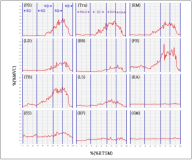
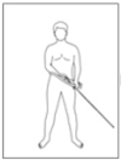
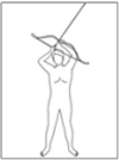
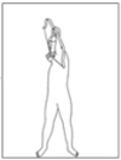
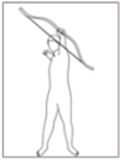
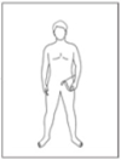
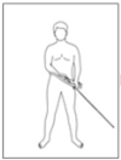

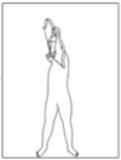
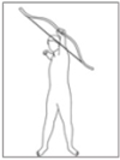
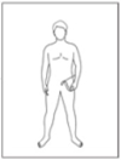

Purpose The purpose of this study is to analyze issues of sexual violence case in sports field reported in the press by using spline function model and text mining. In specific, spline function model is used to measure social interest level based on issue attention cycle theory and figure out the flow of issues by applying text mining. Methods Study material is 2,660 news articles reported from January 1, 2017 to December 31, 2019 and press DB(Big Kinds) of Korea Press Foundation is used to collect study material. Results Social interest level on sexual violence case in sports field is dramatically increased due to disclosure of Sim player starting from Me Too movement started from the culture and art world. Because of this, as structural problem in sports field arises, social interest level comes to a climax, and then it was founded that the government’s countermeasures establishment and special audits by the Ministry of Education were in progress. From the perspective of the issue attention cycle, it has the stages of latent-occurrence-rising-decision-decay-disappearance, but the period from rising to declining is short, so it corresponds to a breaking issue attention cycle. Conclusion This study examines the progress of sexual violence case in sports field from rising to disappearance in the perspective of the issue attention cycle. With this incident, the world of sports is establishing sports ethics center and proceeding policies such as Basic Sports Act, and the future studies need to review the effectiveness of this policy.

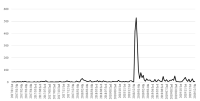
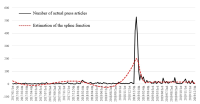
Purpose The purpose of this study was to develop the Emotional Intelligence Scale in Sport Coaching(EISSC) based on the emotional intelligence trait model. Methods The participants were 236 professional sports coaches by the purposive sampling methods via e-mails. 48 preliminary items were developed by literature review among expert panels. Then, a total of 40 items were selected after the item-analysis. Exploratory factor analysis was conducted for construct validity and criterion validity was evaluated by Person’s correlation with coaching efficacy scale and general emotional intelligence scale. An internal consistency, Cronbach's alpha coefficient, was used to see the reliability. Results The results of exploratory factor analysis presented a six sub-structure factors (Self-awareness, Awareness of others, Optimism, Utilization of emotion, Emotion regulation, Social skills) with 20 items, which explained 68.49% of the total variance. Criterion-related validity was supported by correlations with in coaching efficacy(r=.713) and general emotional intelligence(r=.647). Reliabilities were secured with Cronbach’s alpha coefficient .854 for the total 20 items. Conclusions The EISSC can be used to provide an valid measure of emotional ability of coaches in sport.

Purpose This is to provide essential data for training necessary for sweeping through the analysis of muscle activity generated at this time and how much sweeping and what trajectory moves the stone when the movement of the stone is controlled through sweeping. Methods To check and record the distance between the stones by checking the stop position of the stone made by sweeping each section, the length (progress distance) and width (progress direction) were recorded using a reference table and a record preparation table. With the EMG attached, a total of 60 sweeps were made 20 times each from the beginning of the section to the end of the section. Sweeping subjects were asked to sweep as much as possible under the same conditions in all three sections. Results As a result of the study, the muscle mobilization patterns of the 1st and 2nd sections of the stone with the faster speed and the 3rd section with the stone's slower speed appeared differently. It was confirmed that the sweeping motion of curling is a motion that is used evenly among the muscles of the upper extremity, and it can be verified that it is a suitable item for the development of upper body muscles. Also, the right deltoid's muscle activity rate during push and the right triceps brachii during pull was high. Conclusion Each section of the stone's sweeping effect is an exercise that has many variables, such as changes in atmospheric temperature and humidity, changes in ice temperature, temperature-size-number of pebbles, and the edge state-resilience of stones, etc. It is judged that experience can cope with these variables and requires training.

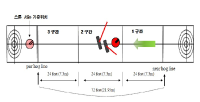

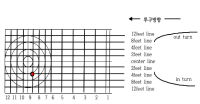
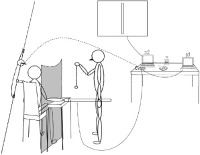
Purpose This study measured the haptic extroperception accuracy, that is, judging one hit position in a hand-held object. Especially, what factors associated the estimation of contact position when the impact is made at the grasped implement by hitting the ball. Methods Relative frequency and conditional probability based analysis verified that perceivers influenced not only the amount of pressure distinguished impressions by the coefficient of restitution but also the pressure distributions encoded impressions by the distance from the hand to the impact. Results Results conformed to previous invariant characteristic on dynamic touch in showing that perceiving the location of the impact of grasped objects, including dominant perceiving selectively modality, is constrained by inertial properties with such success requires appreciating the location of the implement’s center of percussion. Conclusion Investigated in this planes captured as a mechanical factor, we would suggest a broader hypothesis for further research into the effects of the rotational inertia related to haptic position accuracy in the hand-held object, and leading to different estimates of system function providing an account of generalization that accommodates of its varied aspects.





Purpose The purpose of this studied to improve athletes’ performance through sports psychological skills training and counseling of a male canoe player in high school. Methods One male high school athlete in J area was interviewed for sports psychological skills training and counseling, and interviewed athletes and coaches diagnosed the potential psychological problems of athletes. Through this process, the athlete gained the ability to control anxiety about the game and strengthened the attention-focused ability to increase his confidence and set a goal for improving concentration. For effective training, sports psychological counselors, athletes, and coaches met once a week to create a routine. and participated in direct training on a boat with the coach every week. Sports psychological skills, anxiety about competition, and self-management of athletes were measured before and after to confirm the effectiveness of training of athletes' psychological skills. Results As a result, athletes' psychological skills and anxiety decreased, their confidence increased, and their concentration, which was diagnosed as an urgent problem of athletes, improved. Conclusions psychological skills of athletes, psychological shortcomings of players were reinforced, thus enhancing the athletes' performance. This suggests the effectiveness and necessity of training in sports psychological skills. It is hoped that continued support will serve as an opportunity to diagnose potential psychological problems of student athletes and apply them to training to contribute to improving their performance.
Purpose The purpose of this study is to examine the differences in physique and physical fitness factors affecting exercise performance according to the vitamin D receptor (VDR) FokI gene polymorphism in athletic gifted children. Methods FokI VDR polymorphisms were genotyped in 82 boys (9.1±0.9 years) and 55 girls (9.3±0.9 years). Basic physical fitness (basketball throw, half-squat jump, standing long jump, 15m pacer, 50m run, handgrip strength, side-step, trunk forward flexion, sit-up) and physique were measured and analyzed using one-way ANOVA with bonferroni’s correction. Results No association was found between the VDR FokI genotypes and all the physical fitness variables as well as physique variables in boys and girl. However, Hardy-Weinberg equilibrium results for VDR polymorphism distribution showed significant differences (χ2= 6.516, df=2, p=.038). Conclusion Although there was no significant difference in the fitness variables according to the VDR Fok1 genotype, it was difficult to exclude the potential for predicting fitness in that the H-W equilibrium test showed a significant difference. Therefore, in order to confirm the true potential of the VDR Fok1 gene to predict physical fitness, it is considered that additional studies on general children should be conducted.